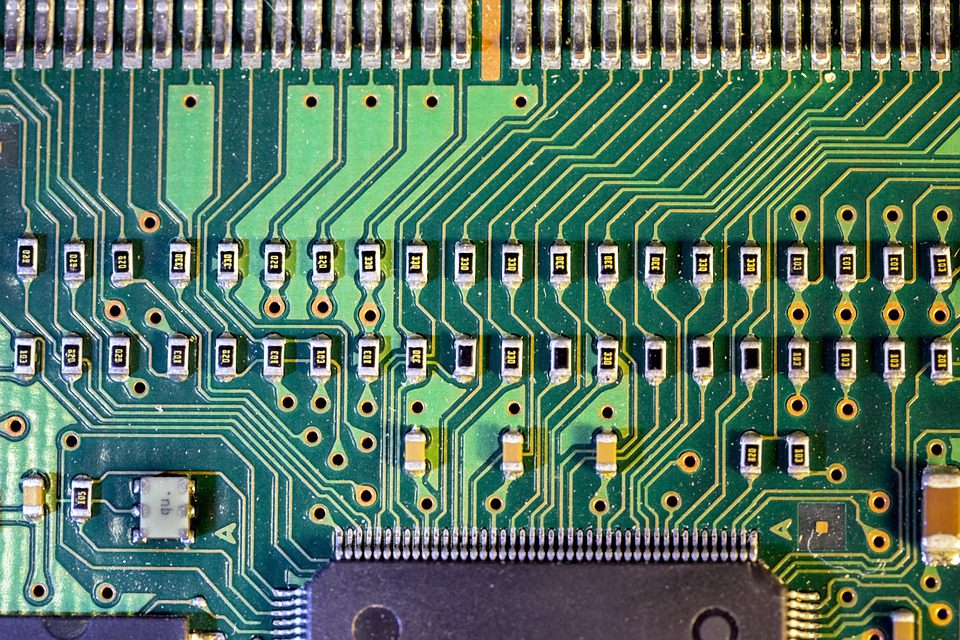We all know that printed circuit boards (PCBs) are probably the most crucial and intricate components in electronic hardware. These parts are very sensitive and can be easily damaged.
One of the most common causes of PCB failure is electrostatic discharge (ESD). Even the slightest occurrence of ESD can cause irreparable damage. In this article, we’ll tell you exactly what causes ESD, and the effects it may have on PCBs, and what safety measures can be taken to prevent it.
What is electrostatic discharge and what causes it?
ESD or electrostatic discharge is basically a miniaturized form of lightning, similar to what you see during a thunderstorm. It usually happens when two nonconductive objects with varying charges come in close contact with each other, breaking the “dielectric” between them. The breakdown in consumer items usually happens over the air (with over 40 kV/cm voltages).
Sparks from electrostatic discharge can happen in several environments. An individual taking a stroll on a carpeted floor can make high-static voltages because of triboelectric charging, while machines that feature plastic components can generate an ESD due to the rubbing of plastic against other plastic materials.
How ESD Can Damage PCBs
PCBs can sustain ESD damage through various stages in their lifetime, including production, testing, shipping, or everyday use. Below is a list of things that can cause ESD-induced damage to PCBs:
- Not using an electrostatic wrist strap while handling circuit boards.
- Placing synthetic materials such as plastic or Styrofoam near electronic equipment.
- Rapidly-moving air near electronic equipment, such as compressed air being used to blow off dust from PCBs.
- Connecting or disconnecting cables to electronic systems.
- Even walking on a carpet near your electronic devices can cause static charge that may be harmful.
In these scenarios, static charge can accumulate without you even knowing about it. PCB assemblies don’t necessarily need to come in contact with the charged object to sustain ESD damage.
ESD Without the Human Touch
Besides the physical touch, there are several other ways that ESD can damage a printed circuit board’s assembly. For example, it can cause harm in the following scenarios:
- Putting synthetic material like plastic and/or Styrofoam near the electronic component.
- Utilizing ungrounded electrical material like oscilloscope to fix/troubleshoot circuitry.
- Generating rapid “air movements” near the assembly, like when compressed air is used to clean the assembly, placing electronic material around air handling systems, or using fans to blow air on PCB assembly.
In any of these situations, static charge may build up without the PCB user’s knowledge, and electrostatic discharge may take place without the charged object coming in physical contact with the printed circuit board’s assembly.
The Impact of ESD on PCBs?
The effects of ESD on circuit boards are not always observed immediately. Sometimes the charges don’t damage the PCB components enough to make them fail. Instead, it just causes enough damage to make the PCB slowly deteriorate over time before eventually failing altogether.

(Pixabay / Panals)
Devices that are particularly susceptible to ESD damage include solid state drives (SSDs), programmable logic devices (PLDs), and field-programmable gate arrays (FPGAs).
How to prevent ESD in PCBs
The prevention of PCB failure due to ESD starts during the design stage. Following proper design guidelines and selecting components with a high ESD-tolerance may prevent PCB failure due to electrostatic discharge.
Below are a few precautionary steps that designers can follow to prevent ESD damage in PCBs:
- Ensure there’s enough space between traces that carry different voltages. In case of a high voltage difference, an air gap may need to be introduced.
- Surge protection diodes can be used at the input and output ports of the circuit.
- Isolated pads can be used for connectors with metallic bodies.
- Protection devices can be placed between the connector and the device pin.
- Edge-triggered devices that are prone to system malfunction can be avoided while designing logic circuits.
- “Level-sensing logic” that features a validation strobe can be leveraged to enhance circuit electrostatic discharge immunity.
After production, special care still needs to be taken to minimize the effects of ESD in PCBs. Below are a few examples:
- Don’t place synthetic materials within 4 inches of electronic equipment.
- Do not clean circuit boards with compressed air. Instead, use a non-static spray.
- Wear an electrostatic wrist strap when handling PCBs.
- Reduce the buildup of static charges on carpets by treating them with de-static solutions.
- Use a transient voltage suppressor (TVS) at every external connection to protect the board and its vulnerable components.
Besides all of that, it’s critical to identify and define an “ESD Secured Area” on the PCB, which is often the demarcated space in which all the objects, surfaces, and ESD sensitive materials are kept in equal potential and linked to the ground.
The secured area should also be labeled with clear signage and its access should be restricted to an experienced user. With that said, PCB designers, assemblers, and users need to be aware of the risks of electrostatic discharge and ways to manage static electricity.
What If I Want to Outsource PCB Assembly?
When outsourcing your PCB assembly, it’s important to make sure that your supplier understands the importance of ESD-prevention during each stage of production. Here at EMS Solutions, we have the necessary certifications and nearly two decades of experience to ensure that we handle your PCB assembly with the utmost of care. We’ll make sure no electrostatic discharge happens, and that your final design adheres to industry-specific protection against ESD damage. Contact us today to learn more.
